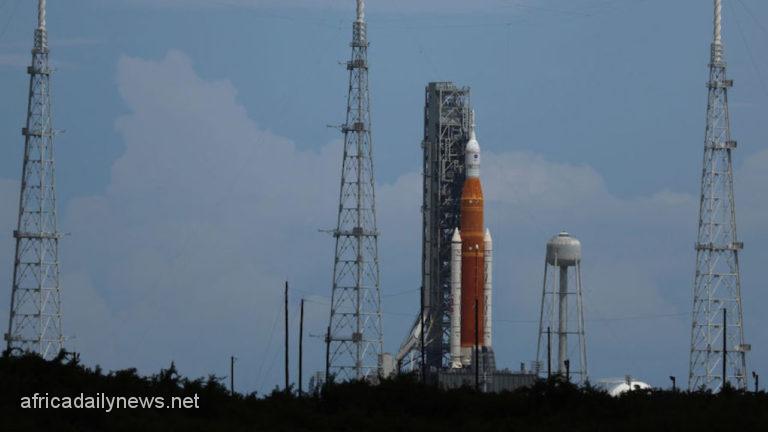Unfortunate incidents which includes an unprecedented Engine failure has caused NASA to call off a test flight on Monday on of its largest-ever rockets which was supposed to go to the moon in a setback to the ambitious program to send humans back to the Moon and eventually to Mars.
“We don’t launch until it’s right,” NASA administrator Bill Nelson said after an engine temperature issue forced liftoff from Kennedy Space Center to be scrubbed.
Read Also: NASA Astronauts Head For ISS On Historic SpaceX Blast Off
“This is a very complicated machine,” Nelson said. “You don’t want to light the candle until it’s ready to go.”
Alternative dates for the launch of the United States space agency’s uncrewed Artemis 1 mission had been slated for Friday and next Monday. Blastoff had also been planned for 8:33 am (1233 GMT) but was cancelled because of a temperature problem with one of the four RS-25 engines on the 322-foot (98-meter) Space Launch System (SLS) rocket.
NASA had also revealed that a test to get one of the engines to the proper temperature range for liftoff had not been successful.
It said the SLS rocket and Orion crew capsule which sits on top “remain in a safe and stable configuration.”
Nelson said delays were “just part of the space business” and expressed confidence that NASA engineers will “get it fixed and then we’ll fly.”
Tens of thousands of people — including US Vice President Kamala Harris — had gathered near the Kennedy Space Center in Florida to watch the launch, which comes 50 years after Apollo 17 astronauts last set foot on the Moon.
The goal of the flight is to test the SLS and Orion crew capsule. Mannequins equipped with sensors are standing in for a crew for the mission. Overnight operations to fill the orange-and-white rocket with more than three million liters of ultra-cold liquid hydrogen and oxygen were briefly delayed by a high risk of lightning.
Around 3:00 am, another hiccup emerged: a potential leak was detected during the filling of the main stage with hydrogen, causing a pause. After tests, the flow resumed. NASA engineers later detected the engine temperature problem and put a hold on the countdown before eventually scrubbing the launch.
The rocket’s Orion capsule is to orbit the Moon to see if the vessel is safe for people in the near future. At some point, Artemis aims to put a woman and a person of color on the Moon for the first time.










